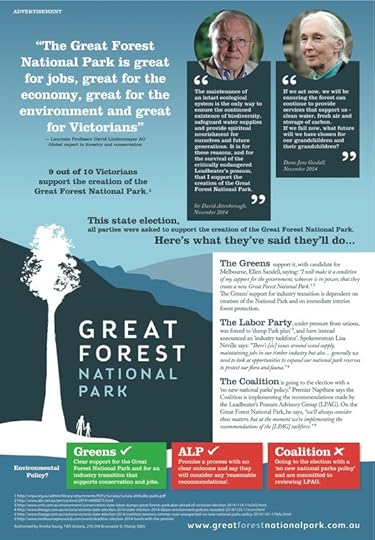Jennifer Scoullar's Blog, page 12
December 22, 2014
MY TOP TEN AUSSIE READS IN 2014 WERE …
Write Note Reviews top 10 Aussie books for 2014, including Billabong Bend by yours truly! Some wonderful summer reading here …
 Originally posted on Write Note Reviews:
Originally posted on Write Note Reviews:
It’s been another big year for reviewing in 2014. I’ve managed to review more than 130 books, of which 56 were by Australian Women Writers. Of these, 13 were by West Australian writers. Not every book I read in 2014 has been reviewed, simply because I needed to make time for “just because” reads – who wants reading to become a chore, another item on ever-increasing to-do or bucket lists? Nor have I included cookbook reviews in these numbers. Genres have ranged from literary to crime, contemporary to historical, romance to young adult … I’m not an “all your eggs in one basket” reader.
So, how do I choose my favourites? Do I choose best by genre? Best overall? Since books by Australian writers featured most heavily, I decided to go with my favourite Australian books of 2014 (to link to my reviews, click on the images or titles). That…
View original 584 more words

December 21, 2014
The Butch Tales 1: Daka
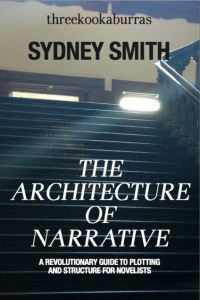 Well, it’s almost Christmas. Instead of relaxing into a new year, I’m madly editing Turtle Reef to meet a January 7th deadline. Author and renowned writing mentor Sydney Smith will be guest-blogging for me over this period. I gave her an open-ended charter: book reviews, publishing information, publicity for her upcoming writing craft book, The Architecture of Narrative – all great topics. ‘Or you could write about your cats.‘ Now we have six stable cats here on the farm, most of them acquired quite by accident. They are great characters, so I understand Sydney’s love for these creatures. Without further ado, may I present to you the first in a series of city cat stories – a little tale about loyalty, and how it needs to be earned.
Well, it’s almost Christmas. Instead of relaxing into a new year, I’m madly editing Turtle Reef to meet a January 7th deadline. Author and renowned writing mentor Sydney Smith will be guest-blogging for me over this period. I gave her an open-ended charter: book reviews, publishing information, publicity for her upcoming writing craft book, The Architecture of Narrative – all great topics. ‘Or you could write about your cats.‘ Now we have six stable cats here on the farm, most of them acquired quite by accident. They are great characters, so I understand Sydney’s love for these creatures. Without further ado, may I present to you the first in a series of city cat stories – a little tale about loyalty, and how it needs to be earned.
The Butch Tales 1: Daka
Every time I think about writing the Butch Tales I think first of Daka, Butch’s predecessor.
Daka came to me late in her life, when she was twelve. We met when I was sharing a house in Brunswick with Nell. I had been house-sharing for years and was used to having a pet around the place. In these situations, there was never any question of whose responsibility the animals were. They were fed and walked and petted in the usual way, and I never gave it a thought.
But soon after I moved in with Nell I realised something was wrong. Nell had two pets, black, feline Daka and a white bitser called Gina, named after La Lollabigida. Daka is one of the nonsense words Indian musicians and dancers use to count out beats. Her full name was Daka Dimi, which is the four-beat mantra.
Nell used to let Gina into her bedroom first thing in the morning for some private communion and kept Daka, meowing angrily, out in the passage. Nell said, ‘Daka has to learn to be loyal.’ Every afternoon when Nell cycled out to her second shift at work, Daka crouched at the front door, waiting for her to come home. She waited for something that would never come, for though Nell never hit her animals, she didn’t pat or praise them either. She didn’t understand animals and their needs.
Daka was a shrewish cat who scratched anyone who tried to pat her. She’d take a swipe at people as they walked past. She’d squat in an armchair, a cranky look on her face, like a little devil waiting for some unwary mortal to stray too close. People were nervous around her. All animals need love, and her uncouth manners kept her starved of it.
The problem for me came to a head over food. Nell fed her pets once a day, sometimes at five o’clock, or nine, or midnight. She thought a cat could live on rice and vegetables cooked with a bit of mince. But cats are carnivores, and Daka used to go hungry. It caused me a lot of distress to see her starve. I kept telling myself she was Nell’s cat, that it was none of my business how she treated her pets.
Then late one afternoon Nell packed her bag for an overnight stay with her partner and cycled over to Kew. She didn’t make provision for her animals. She didn’t feed them before she left. I waited for her to call and ask me to feed them. I didn’t know the number at her partner’s house. I waited and waited, watching Daka and Gina grow frantic with hunger. Every time I went into the kitchen to get a glass of water or to make dinner, they crowded around my legs. Finally, I fed them.
Once I started, I kept on doing it, every day on the dot of five o’clock. If Nell was home, I’d ask her permission. It felt weird. They were her pets, not mine; I had no rights over them. Yet she didn’t object. I’d trot up to the milk bar to buy some cans of food and fill the pet bowls at home. As Daka ate, I stroked her to help her associate human touch with something good.
I never felt comfortable about feeding Nell’s pets, but I felt worse not feeding them. Nell complained more than ever about Daka’s “disloyalty” while accepting with imperial serenity that feeding her pets was now my duty.
Before long, Daka took up residence in my bedroom. A curtain hung over the doorway, and whenever people came into the house, she’d poke her head from behind the curtain and meow. Nell would look at her, aggrieved, as if Daka had struck her a painful blow.
Daka never became a cat whom people could pick up or pat, but since she spent most of her time in my room, people could walk about without fear of her claws. After a few months, Nell went to live in Kew with her partner. She took Gina and left Daka with me.
Two weeks later, Nell returned to pick up some things. We sat on the glory chest in the kitchen to have a cup of tea and chat about her new situation. In strolled Daka. She froze at the sight of Nell, one paw in the air. After a little think, she walked over to Nell’s side of the glory chest, jumped up, trampled across Nell’s legs, and sat down beside me, her flank touching me, her Byzantine head turned away from her former owner.
Nell, looking more baffled than ever, said, ‘I don’t understand why she’s disloyal.’
Coming soon, The Butch Tales 2: The Boy King.
It is my great pleasure to announce the book giveaway winners – Karen McDermott and Laura Boon. I shall email you both privately for your postal address. Many thanks to those who commented and a very merry Christmas to all!

December 14, 2014
The Wound (plus a book giveaway!)
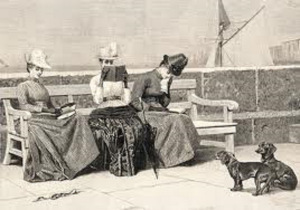 Welcome to our monthly blog chat about the craft of fiction. Today, writing guru Sydney Smith and I talk about that great character driver – the psychological wound. (Fellow Penguin author Kathryn Ledson will be back on board in the New Year)
Welcome to our monthly blog chat about the craft of fiction. Today, writing guru Sydney Smith and I talk about that great character driver – the psychological wound. (Fellow Penguin author Kathryn Ledson will be back on board in the New Year)
SYDNEY -
Some characters in fiction have suffered a psychic wound before the story opens, or suffer it at the time the story opens. They spend the rest of the novel trying to heal it. This effort at healing is what the narrative is about, and is a great motivator.
The psychic wound and the healing activity are a common feature of crime fiction. Harry Bosch, for example, Michael Connelly’s series hero, suffered a psychic wound in his boyhood when his mother was murdered and her killer was not found. Thirty years later, now a homicide detective with the LAPD, he is driven to stand up for all victims of murder, no matter who they were, and do his utmost to find their killers. His work is his attempt to heal his psychic wound.
Jenny, your next novel features several characters who have suffered a psychic wound.
JENNY -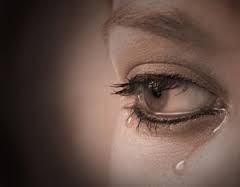 Yes, Sydney, in my next novel more than one character will be suffering from psychic wounds that have happened before the story opens. I like to call them their back story ghosts. Since I know what they are already, I can work backwards to give characters convincing and relevant emotional arcs. These wounds will determine their flaws, how they see the world, what they think they want, what they actually want, and how they go about trying to get it. Their search for healing will drive the narrative forward. They’ll go (hopefully!) from being haunted by ghosts, to resolution and living their fullest lives.
Yes, Sydney, in my next novel more than one character will be suffering from psychic wounds that have happened before the story opens. I like to call them their back story ghosts. Since I know what they are already, I can work backwards to give characters convincing and relevant emotional arcs. These wounds will determine their flaws, how they see the world, what they think they want, what they actually want, and how they go about trying to get it. Their search for healing will drive the narrative forward. They’ll go (hopefully!) from being haunted by ghosts, to resolution and living their fullest lives.
SYDNEY -
You make a good point, Jenny. There is a vast difference between what a character thinks they want and what they really want. They create plot by doing things in pursuit of what they think they want―and wonder why their wound isn’t healing. It’s only when they finally understand what they really need that they are able to start the healing process.
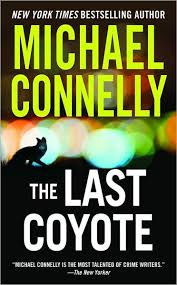 Again, Harry Bosch is a good example of this. He thought what he really wanted was to solve the murders of people he has never met, doing it as part of his job. It’s not until he realises that he has been overlooking the one murder that matters most to him, the murder of his mother, that he is able to start the healing process by searching for her killer. He does this in The Last Coyote. The novel signals in the first chapter that something is wrong. He’s been placed on stress leave and must see a police psychologist three times a week. He’s having a breakdown. Michael Connelly shows it very powerfully and poetically (yes, crime novels can be poetic!) through his house, which has been irreparably damaged by an earthquake. Though it’s too dangerous to be lived in, Harry keeps trying to fix it. He’s doing the wrong thing to heal his psychic wound―that is, he’s trying to fix something that is broken beyond repair in order to go back to the old way of living. It’s only when he sets out to find his mother’s killer that he is able to begin the long and painful process of healing.
Again, Harry Bosch is a good example of this. He thought what he really wanted was to solve the murders of people he has never met, doing it as part of his job. It’s not until he realises that he has been overlooking the one murder that matters most to him, the murder of his mother, that he is able to start the healing process by searching for her killer. He does this in The Last Coyote. The novel signals in the first chapter that something is wrong. He’s been placed on stress leave and must see a police psychologist three times a week. He’s having a breakdown. Michael Connelly shows it very powerfully and poetically (yes, crime novels can be poetic!) through his house, which has been irreparably damaged by an earthquake. Though it’s too dangerous to be lived in, Harry keeps trying to fix it. He’s doing the wrong thing to heal his psychic wound―that is, he’s trying to fix something that is broken beyond repair in order to go back to the old way of living. It’s only when he sets out to find his mother’s killer that he is able to begin the long and painful process of healing.
JENNY -
In my characters’ case the wounds will be big ones, but small ones can also be great motivators. A man may be ridiculed for being small, and develop a Napoleon complex. The story goes that Napoleon compensated for his lack of height by seeking power, war and conquest. A woman might have had to raise her siblings, due to the neglect of their alcoholic mother. The perfect recipe for a control freak who believes if she doesn’t do it, it won’t get done. It’s only when wounded characters develop some insight into their lives, that they can see the world as it really is and begin to achieve their goals. I’ve outlined my new book very roughly, and this insight will come in the middle, which I think is just about right.
SYDNEY -
I absolutely agree with you, Jenny. Insight comes in at around the midway mark. That gives the characters time to sort out all the mistakes they made and begin to set things right.
 The wound can apply to antagonists, too. I love a good antagonist. To me, a novel stands or falls on the strength and complexity of its antagonist. The wound can be a great way to give this character a back story ghost that keeps haunting them. A wound they feel driven to heal. In Pride and Prejudice, Mr Wickham has a wound. This was caused by Mr Darcy when he discovered at the eleventh hour that Wickham had plotted to elope with Georgiana Darcy. If Wickham had succeeded, he would have got his hands on her rich dowry, thus giving him a life of ease and luxury to the end of his days. His actions in the novel are his attempt to heal that wound by punishing Darcy. It doesn’t work. It never does for antagonists. Only protagonists are capable of insight and healing. But Wickham’s wound and his efforts to heal it through vengeance make him complex and formidable.
The wound can apply to antagonists, too. I love a good antagonist. To me, a novel stands or falls on the strength and complexity of its antagonist. The wound can be a great way to give this character a back story ghost that keeps haunting them. A wound they feel driven to heal. In Pride and Prejudice, Mr Wickham has a wound. This was caused by Mr Darcy when he discovered at the eleventh hour that Wickham had plotted to elope with Georgiana Darcy. If Wickham had succeeded, he would have got his hands on her rich dowry, thus giving him a life of ease and luxury to the end of his days. His actions in the novel are his attempt to heal that wound by punishing Darcy. It doesn’t work. It never does for antagonists. Only protagonists are capable of insight and healing. But Wickham’s wound and his efforts to heal it through vengeance make him complex and formidable.
I suppose one of the many differences between a wound in a protagonist and a wound in an antagonist is that the former is sympathetic. It’s possible to imagine that Wickham felt wounded just because he was born the son of a steward and Darcy was the scion of a rich and illustrious family. It’s not very sympathetic, although in fact, I think this kind of wound to a person’s self-love is very common. A Napoleon complex might look different on the surface, but it comes from the same source, a wound to the sufferer’s idea of what is due to them.
But anyway, the point is that healing a wound is a great character driver, one of the best out there.
Thanks Sydney. Excellent advice as always! … To celebrate my new contract, and reaching 40,000 views on this blog, I’m giving away 2 copies of Billabong Bend. (If you’d rather another one of my books just say.) Thank you to all my readers! To go in the draw, just comment on this post. (Aust and NZ only) Winners announced 22nd December.


December 7, 2014
An Original Idea + Book Giveaway
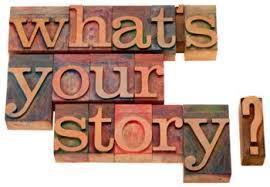 I’m envious of other writers who have umpteen story ideas swirling around in their head at once. I was talking to an author friend the other day about getting inspiration. She has twenty different story outlines in her bottom drawer. ‘I can look at the headlines in a newspaper,’ she said, ‘and get three or four ideas for a novel then and there. My problem is that once I’m 150 pages into a novel, my mind is already ranging ahead to the next project.’ I looked at her askance and made some unfavourable comparisons. When I’m 150 pages into a novel I still have no idea what my next project will be about!
I’m envious of other writers who have umpteen story ideas swirling around in their head at once. I was talking to an author friend the other day about getting inspiration. She has twenty different story outlines in her bottom drawer. ‘I can look at the headlines in a newspaper,’ she said, ‘and get three or four ideas for a novel then and there. My problem is that once I’m 150 pages into a novel, my mind is already ranging ahead to the next project.’ I looked at her askance and made some unfavourable comparisons. When I’m 150 pages into a novel I still have no idea what my next project will be about!
 But being a novelist means writing new books, so an idea is kind of essential. It’s the foundation for your new story, and I’m always overjoyed when it finally comes to me. I don’t mean a fully realised plot – It could just be a theme, or a main incident. It could be a character, or scene. A line of dialogue or setting. It’s simply that first kernel of an idea, and for me it’s my guiding light. Everything else might change, but not this.Then I think about my characters, who emerge pretty quickly at this point. Who are they at the beginning and who will they be at the end? A little thought at this early stage ensures well-developed character arcs, and saves a lot of hit-or-miss writing. By this time a theme will be emerging, and I like to have it in mind before I start. It will keep the book heading in a consistent direction, and add emotional depth.
But being a novelist means writing new books, so an idea is kind of essential. It’s the foundation for your new story, and I’m always overjoyed when it finally comes to me. I don’t mean a fully realised plot – It could just be a theme, or a main incident. It could be a character, or scene. A line of dialogue or setting. It’s simply that first kernel of an idea, and for me it’s my guiding light. Everything else might change, but not this.Then I think about my characters, who emerge pretty quickly at this point. Who are they at the beginning and who will they be at the end? A little thought at this early stage ensures well-developed character arcs, and saves a lot of hit-or-miss writing. By this time a theme will be emerging, and I like to have it in mind before I start. It will keep the book heading in a consistent direction, and add emotional depth.
 Then I play the ‘what if?‘ game. Your initial idea might be a selfish man decides to turn his life around. Then play what if. What if the man is a cat burglar? Better. What if he wants to put stolen stuff back? What if his plans are frustrated by a detective that is getting too close? What if he needs to put stuff back in that detective’s own house? The original idea is getting fleshed out.
Then I play the ‘what if?‘ game. Your initial idea might be a selfish man decides to turn his life around. Then play what if. What if the man is a cat burglar? Better. What if he wants to put stolen stuff back? What if his plans are frustrated by a detective that is getting too close? What if he needs to put stuff back in that detective’s own house? The original idea is getting fleshed out.
Now, whenever I read a book or watch a film, I try to work out what was the original idea that the creator had. Babe – what if a pig was raised by sheep-dogs? The Verdict – what if an alcoholic lawyer took on a hopeless case against the best attorneys in the land? Gone With The Wind – what if it fell to a spoilt southern belle to defend her family’s plantation during the Civil War? The Wizard Of Oz – what if a little girl is stuck in a strange land and can’t get home? This game is fun, try it. It can also give you the tagline for your book, distilling the narrative down to its essentials. What if a repentant cat burglar decided to put everything back? Good idea. It’s probably been done before, but each telling of a story will be different.
Anyway, I’ve got an idea for my next story, and Penguin have given it the nod. Now all I have to do is write it!
To celebrate my new contract, and reaching 40,000 views on this blog, I’m giving away 2 copies of Billabong Bend. (If you’d rather another one of my books just say.)Thank you to all my readers. To go in the draw, just comment on this post. (Aust and NZ only) Winners announced 22nd December.

November 30, 2014
Give Us Our Great Forest National Park!
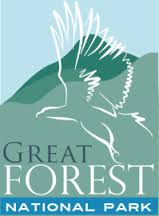 There was an election here in Victoria on the weekend. It led to a change of government. Labor’s Daniel Andrews has succeeded Dennis Napthine as our Premier and I congratulate him on his win. A major issue was the creation of a Great Forest National Park, something very close to my heart. International luminaries like David Attenborough and Jane Goodall have campaigned hard on this. Their intervention comes as a survey found 89 per cent of Victorians support the creation of a new national park in the beautiful Yarra Ranges and Central Highlands, stretching from Kinglake to Mt Baw Baw, and north to Lake Eildon.
There was an election here in Victoria on the weekend. It led to a change of government. Labor’s Daniel Andrews has succeeded Dennis Napthine as our Premier and I congratulate him on his win. A major issue was the creation of a Great Forest National Park, something very close to my heart. International luminaries like David Attenborough and Jane Goodall have campaigned hard on this. Their intervention comes as a survey found 89 per cent of Victorians support the creation of a new national park in the beautiful Yarra Ranges and Central Highlands, stretching from Kinglake to Mt Baw Baw, and north to Lake Eildon.
 I urge our new Premier to embrace this vision for a multi-tiered parks system for bush users and bush lovers alike. It would host bike riding, bushwalking, fishing, bird watching, four-wheel driving, motor biking, camping, horse riding and much more. The tallest flowering trees in the world grow in this region. In their high canopies dwell Powerful Owls, Sugar Gliders and the tiny Leadbeater’s (or Fairy) Possum. Leadbeater’s possums are Victoria’s critically endangered faunal emblems, and they only live in these mountain ash forests of the Central Highlands. Here is a chance to provide Victorians and their children’s children with a unique natural resource, that will also bring lots of tourist dollars to the state. (You can sign the Wilderness Society’s petition here.) Come on Mr Premier – please give us this! :)
I urge our new Premier to embrace this vision for a multi-tiered parks system for bush users and bush lovers alike. It would host bike riding, bushwalking, fishing, bird watching, four-wheel driving, motor biking, camping, horse riding and much more. The tallest flowering trees in the world grow in this region. In their high canopies dwell Powerful Owls, Sugar Gliders and the tiny Leadbeater’s (or Fairy) Possum. Leadbeater’s possums are Victoria’s critically endangered faunal emblems, and they only live in these mountain ash forests of the Central Highlands. Here is a chance to provide Victorians and their children’s children with a unique natural resource, that will also bring lots of tourist dollars to the state. (You can sign the Wilderness Society’s petition here.) Come on Mr Premier – please give us this! :)

November 22, 2014
The Beautiful Rainbow Gum
 Mother nature never ceases to surprise me. Thought I knew a fair bit about gum trees, but I didn’t know about Eucalyptus deglupta (Rainbow Eucalyptus) until a few weeks ago. Have I been the only one unaware of this astonishingly beautiful tree?
Mother nature never ceases to surprise me. Thought I knew a fair bit about gum trees, but I didn’t know about Eucalyptus deglupta (Rainbow Eucalyptus) until a few weeks ago. Have I been the only one unaware of this astonishingly beautiful tree?
It originated in the rainforests of New Guinea, Sulawesi and Mindanao and is the only eucalypt to naturally occur in the  northern hemisphere. It is one of four species not endemic to Australia. They can grow to sixty-five metres tall with a trunk diameter of over two metres.
northern hemisphere. It is one of four species not endemic to Australia. They can grow to sixty-five metres tall with a trunk diameter of over two metres.
Vivid stripes of colour show as the brown bark peels away to reveal a bright green layer beneath. As time passes the green fades through an astounding range of colours – dark green, blue, purple, orange, red, crimson, claret and back to brown. Then the process begins all over again, giving a beautiful rainbow brush-stroke effect. It’s hard to believe these trees are real.
They are apparently widely grown in tropical areas in pulp-wood plantations. What a magnificent sight that must be! I think in this case pictures really are worth more than words …

November 14, 2014
The Author Unmasked
 Welcome to our monthly blog chat with writing guru Sydney Smith and fellow Penguin author Kathryn Ledson. Today we’re talking about how authors must remain hidden.
Welcome to our monthly blog chat with writing guru Sydney Smith and fellow Penguin author Kathryn Ledson. Today we’re talking about how authors must remain hidden.
KATH
Possibly the most important job an author has is to remain invisible. Expose yourself through weak writing and the reader will be dragged away from the world you’ve spent so much time creating, straight into your office. Even a typo or printing error can cause a reader to think about poor editing instead of that desperate, blood-deprived vampire. Here are a few other ways authors (and lazy editors) can expose themselves:
- Trying Too Hard. This is a common mistake of beginner writers (and, ahem, not so beginner). Trying to find sexy or poetic ways to express a thought or action, often with the idea that it’s “fresh”. The mouth seems to cop much of it with smiles teasing the corners of mouths, sighs and moans escaping trembling lips. It’s made worse when those lurking smiles/sighs/moans keep popping up in the same fashion throughout the story. If you can’t come up with something truly fresh, try instead: He sighed. He smiled. He moaned. I’ve learned this is the most effective way to convey to the reader a sense of what’s going on, without losing them to another author. - Not Trying Hard Enough. Clichés! I found one in my current work-in-progress: “She stared at him with a look of horror.” We do get it, but it’s so dull, uninspired, overused, that we glide right by without getting the full impact of what the author’s trying to show (because, of course, we always show, not tell, don’t we, authors?) How about instead: “She stared at him, hand at her throat like it was Dracula, not a tennis player, standing in her kitchen.” (Excuse me while I adjust my WIP.)
- Not Trying Hard Enough. Clichés! I found one in my current work-in-progress: “She stared at him with a look of horror.” We do get it, but it’s so dull, uninspired, overused, that we glide right by without getting the full impact of what the author’s trying to show (because, of course, we always show, not tell, don’t we, authors?) How about instead: “She stared at him, hand at her throat like it was Dracula, not a tennis player, standing in her kitchen.” (Excuse me while I adjust my WIP.)
- Inappropriate Scene Setting. A high-octane moment is not the right time to tell us about the flowering jacaranda in the front garden, unless that’s where the body’s buried. The moment might be tense just in the narrator’s mind―thoughts about a husband’s infidelity or a missing child. Having the smell of a freshly-baked cake lovingly assault her nostrils* right then, simply for the sake of placing the reader, is probably a mistake. It interrupts or brings the tense moment to an abrupt halt which is NOT what we want to do, right? (*see purple prose below.)
- Purple Prose. Too many nouns with adjectives, verbs with adverbs, adjectives with adverbs―argh! When we think we’re adding to a scene, really we’re weakening it with overdone prose. “The gleaming white moon rose slowly over the glistening, mirror-like lake while nearby tiny lambs frolicked joyfully amongst sun-kissed daisies in grassy, green meadows…” Quite apart from the wrongness of lambs frolicking at night, we know the moon is white and rises slowly, and we know what lambs look like and what they do; we don’t need to be told in such flowery detail. This kind of narrative is tedious for the reader, who will think the author is showing off.
- Speaking of which … Showing Off The Results Of Your Research. Know what to use and when/how. In my novel, Monkey Business, I devoted a whole scene to a particularly interesting fact about jungle survival. It read like an instruction manual, thus exposing its silly author.
SYDNEY
Plot controlling character is one of the ways a writer can reveal themselves working the puppet strings behind the scenes of a story. It’s also one of the sneakiest ways to avoid conflict ever invented.
Most writers think about important plot events before they write them. They will know some before they start writing the story, and they will imagine some as they write it. That isn’t necessarily the problem. Issues arise when the writer thinks about how to get these plot events to come about. An experienced writer will create characters who are able to bring these events into being. They will understand whether these events are doable by these characters or not. They will jettison any that are impossible logically or psychologically. Or, more often, their characters will jettison them. When characters come to life, they decide what they will do in pursuit of their goal. This is what it means when writers say their characters come to life and tell them what to write.
In fiction by new writers, this kind of situation doesn’t happen. Characters stick to the plot’s agenda like grim death, changing their personality as required, acting illogically, behaving as if they’ve got no agenda of their own, or not one they’re prepared to stick to. The plot is the dominant agent in the story. The plot decides what characters will do, and is ruthless in getting them to do it. It brooks no argument. It’s a tyrant.
This is a very different situation to characters creating plot, which is how it’s meant to be. If you look at it this way, plot becomes character in action. Characters shape the plot. Characters decide what will happen by pursuing their own agendas come what may, going after what they want with dogged determination, and dealing with opposition as it comes along. So here’s a little example of plot controlling character:
Shay is investigating the death of Marcus. He was shot in the back of the head, behind his left ear. The cops have ruled suicide. But Shay doesn’t believe it.
This is the first instance of plot controlling character: the cops ignore the obvious so that they can close the case. That gives Shay the chance to investigate.
Shay receives a note in her mailbox that tells her to go to 14 Garrod Street, Brunswick, where she will find something of interest. She gets there and is yanked inside by a ruffian with bad breath who tells her she’s too dangerous to stay alive. She’s been investigating the death of Marcus. ‘You should’ve accepted the police findings,’ he says as he straps
her wrists together with gaffer tape. He binds them in front of her, not behind her, leaves her ankles free, splashes petrol around the place and lights a match. As flames leap up the curtains, he whisks himself out of the house, leaving the door unlocked.
Again, this is plot controlling character. He’s tied her hands in front of her so that it’s easier for her to free herself. He’s left the front door unlocked so that, when she’s free, she can get out of the burning house without further difficulty. It might seem shockingly untenable, this whole situation, but believe me, I come across instances as blatant as this, even more blatant, of plot controlling character, every day of my mentoring life.
Not only is the situation unbelievable, but it’s avoided conflict. Yes, a man lured her to the house. That’s a conflict, since he wants to get rid of her and she wants to go on investigating the murder of Marcus. But he’s made it easy for her to escape. Making it hard for her to escape would involve levels of conflict the writer feels uncomfortable with. Then there are the cops and their decision that Marcus killed himself. If the forensic evidence supported suicide, it would be harder for the writer to figure out how to knock off Marcus in a way that looks like suicide but isn’t. Writing a novel involves the author in conflict as they wrestle with their characters and their own powers of invention. Plot controlling character minimises conflict for everybody, but especially for the writer.
Now look at the ruffian’s agenda. What is it? It seems to be that he wants to get rid of Shay so that the truth about Marcus’ death will never come out. But if he was committed to his agenda, wouldn’t he do his utmost to make sure Shay dies in the fire? How does it help his agenda if he makes it easy for her to escape? It doesn’t, but it helps the plot’s agenda. The plot wants Shay to escape and makes the ruffian forfeit his agenda in order to make it happen. I call this kind of character the uncommitted antagonist: he’s not committed to his agenda. Characters have to act out of who they are and what they want, even if that makes life hard for them, even if it makes life hard for the writer. The outcome of character commitment is compelling fiction.
JENNY
That’s a brilliant explanation of why the best stories are character-driven, Sydney! (Love the word ruffian.) And there are plenty of other ways that the author’s hand can reveal itself, giving readers an unwelcome reminder that they’re being spun a story. Telling, not showing is an obvious one. Inexperienced writers can become dictators, ordering us how to feel about their fictional world. Readers don’t like that. They like to come to their own conclusions. Saying that a character is scared or shy or happy robs the reader of  that pleasure. Too many adverbs will have the same effect. Saying that the day is uncomfortably hot, or that a character is dangerously close to the cliff, reveals the lazy author behind the scenes. Readers must be able to assess for themselves how hot it is, or how dangerous a situation might be. As Anton Chekhov so famously put it, ‘Don’t tell me the moon is shining; show me the glint of light on broken glass.’
that pleasure. Too many adverbs will have the same effect. Saying that the day is uncomfortably hot, or that a character is dangerously close to the cliff, reveals the lazy author behind the scenes. Readers must be able to assess for themselves how hot it is, or how dangerous a situation might be. As Anton Chekhov so famously put it, ‘Don’t tell me the moon is shining; show me the glint of light on broken glass.’
Then there’s flat out author intrusion, when the writer speaks directly to the reader under the flimsy guise of narrative or characters. Writers can unintentionally project themselves into stories because they haven’t created multidimensional, fully-formed fictional characters. Instead, they fall back on their own beliefs, opinions and ideas. I’ve been guilty of this myself. It’s easy to spot, once you know what you’re looking for. Are there certain words or phrases that seem out of place, that don’t fit the character? Does your character voice an opinion that has little to do with the actual story, but happens to coincide with your own beliefs?
Other examples of author intrusion relate to Sydney’s point about plot controlling character. Does your character have knowledge that she wouldn’t be expected to have? A humble salesgirl who just happens to be an expert in nuclear physics, or can miraculously disarm a bomb with a safety pin. Or have you done so much research on a particular subject that you want to squash it into the story, even though it doesn’t fit? Research should be like a floating iceberg, most of it invisible beneath the narrative surface. These kind of things stick out. The way to avoid the trap of author intrusion is simple. Always remember that your story belongs to your characters.
SYDNEY
Now I feel like I have to interrogate every word of my new WIP. But not at the moment. I’ve started the first draft of “Rosings”, a spin-off of Pride and Prejudice, which follows the adventures of Anne de Bourgh after her mother dies. (Am I allowed to say that?) First drafts should be allowed to be bad. It’s the next draft that has to be combed through for intrusions by the author. And here’s a final intrusion, one I never thought of before I started writing “Rosings”―if you sound a little bit like Jane Austen but not enough, or if you don’t sound like her at all. Whatever you decide in a spin-off of Jane Austen is going to come across as authorially intrusive.
Kathryn Ledson is the author of Rough Diamond and Monkey Business (Penguin), part of the Erica Jewell series of romantic adventures. You can visit her website and find her blog at www.kathrynledson.com
Sydney Smith is a writing mentor, teacher and author of short stories, essays, and The Lost Woman, a memoir of survival. She will soon be releasing The Architecture of Narrative, a book about how to plot and structure fiction. She offers writing tips at www.threekookaburras.com. If you have a question on any aspect of writing, feel free to visit her at The Story Whisperer.

November 2, 2014
War On Wildlife
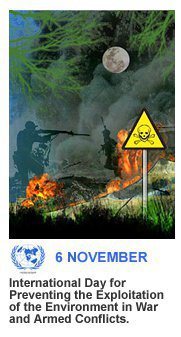 This week we celebrate an international day that I bet you’ve never heard of. Little-known and clumsily named, its message is nevertheless vitally important. Next Thursday is the International Day for Preventing the Exploitation of the Environment in War and Armed Conflict, so declared by the UN General Assembly in 2001. Mankind always counts its war casualties in human terms – dead and wounded soldiers, civilian deaths, destroyed cities and livelihoods. The natural world remains the unpublicised victim of war. Waterways are polluted, forests destroyed, soils poisoned, and wild animals are killed. On 6th November the world acknowledges damage done to the environment through war, and looks for ways to avoid future harm. This is an issue I intend to explore in my next book.
This week we celebrate an international day that I bet you’ve never heard of. Little-known and clumsily named, its message is nevertheless vitally important. Next Thursday is the International Day for Preventing the Exploitation of the Environment in War and Armed Conflict, so declared by the UN General Assembly in 2001. Mankind always counts its war casualties in human terms – dead and wounded soldiers, civilian deaths, destroyed cities and livelihoods. The natural world remains the unpublicised victim of war. Waterways are polluted, forests destroyed, soils poisoned, and wild animals are killed. On 6th November the world acknowledges damage done to the environment through war, and looks for ways to avoid future harm. This is an issue I intend to explore in my next book.
Since the Romans sowed salt on Carthaginian fields during the Third Punic War, conflicts have damaged the earth, both intentionally and as a reckless side-effect. In Iraq, Saddam Hussein’s draining of marshlands in the Euphrates/Tigris Delta provides a classic example of deliberately targeting ecosystems to achieve political and military ends. Decades of war have devastated the forests and wetlands of 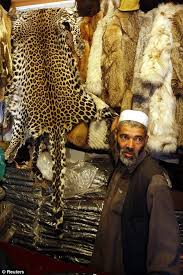 Afghanistan and Pakistan. Bombing and deforestation threatens an important migration path for birds in this region. The number now flying this route has dropped by eighty-five percent in recent years. Foreign aid workers helped drive snow leopards to the brink of extinction by paying thousand of dollars for pelts. Impoverished and refugee Afghans were more willing to break bans on hunting protected species. Once Sierra Leone was thick with ninety percent rainforest. Following conflict the country now has less than four percent forest cover. Decades of civil war threaten gorillas in the Congo. The depressing list goes on and on …
Afghanistan and Pakistan. Bombing and deforestation threatens an important migration path for birds in this region. The number now flying this route has dropped by eighty-five percent in recent years. Foreign aid workers helped drive snow leopards to the brink of extinction by paying thousand of dollars for pelts. Impoverished and refugee Afghans were more willing to break bans on hunting protected species. Once Sierra Leone was thick with ninety percent rainforest. Following conflict the country now has less than four percent forest cover. Decades of civil war threaten gorillas in the Congo. The depressing list goes on and on …
On rare occasions war has had positive effects. One of Asia’s safest, most diverse habitats for endangered species is a narrow, land-mined strip of jungle between two bitterly opposed nations. The Korean Demilitarized Zone (DMZ) has, by chance, helped safeguard 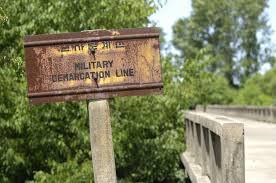 moon bears, red-crowned cranes, and black-faced spoonbills from extinction. South Korea wants the United Nations to recognize the DMZ’s role in wildlife conservation by making it a World Heritage site – getting the international community to protect and expand the wilderness area. “No other place in Korea resembles what it looked like before the war,” says Lee Ki-sup, an ecologist from South Korea. Perversely, peace would be the worst possible outcome for this accidental sanctuary.
moon bears, red-crowned cranes, and black-faced spoonbills from extinction. South Korea wants the United Nations to recognize the DMZ’s role in wildlife conservation by making it a World Heritage site – getting the international community to protect and expand the wilderness area. “No other place in Korea resembles what it looked like before the war,” says Lee Ki-sup, an ecologist from South Korea. Perversely, peace would be the worst possible outcome for this accidental sanctuary.
 There is hope. In recent years, an increasing number of governments have asked the UN to conduct post-war environmental assessments. A team is currently examining the environmental impact of the conflict in Lebanon, and others are working closely with the governments of Sudan and Iraq. Rules, such as the Geneva Conventions, govern the conduct of war. However the environmental consequences are overlooked. It’s high time that we review international agreements related to war and armed conflict to ensure they also cover deliberate and reckless damage to the environment.
There is hope. In recent years, an increasing number of governments have asked the UN to conduct post-war environmental assessments. A team is currently examining the environmental impact of the conflict in Lebanon, and others are working closely with the governments of Sudan and Iraq. Rules, such as the Geneva Conventions, govern the conduct of war. However the environmental consequences are overlooked. It’s high time that we review international agreements related to war and armed conflict to ensure they also cover deliberate and reckless damage to the environment. 

October 26, 2014
The Mirror Moment
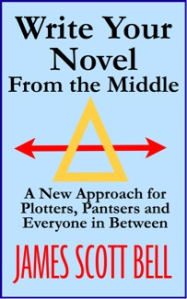 I’m having a writing hiatus, in between books. But that doesn’t mean I’m not thinking about writing. Quite the contrary. I’m mulling and reading and plotting – dreaming up my next story. Part of this process involves reading some books on writing theory. My friend and fellow Penguin author Kathryn Ledson has been singing the praises of James Scott Bell’s Write Your Novel From The Middle. I downloaded this little book onto my Kindle and guess what? Kath’s right! Here’s the blurb:
I’m having a writing hiatus, in between books. But that doesn’t mean I’m not thinking about writing. Quite the contrary. I’m mulling and reading and plotting – dreaming up my next story. Part of this process involves reading some books on writing theory. My friend and fellow Penguin author Kathryn Ledson has been singing the praises of James Scott Bell’s Write Your Novel From The Middle. I downloaded this little book onto my Kindle and guess what? Kath’s right! Here’s the blurb:
What’s the best way to write a “next level” novel? Some writers start at the beginning and let the story unfold without a plan. They are called “pantsers,” because they write by the “seat of the pants.” Other writers plan and outline and know the ending before they start. These are the “plotters.” The two sides never seem to agree with each other on the best approach.
But what if it’s not the beginning or the end that is the key to a successful book? What if, amazing as it may seem, the place to begin writing your novel is in the very middle of the story? I’m excited to tell you, that’s exactly where you’ll find it. I am truly jazzed about the technique I discovered. I’ve used it on every book of mine since, and have now set it out for you in this volume.
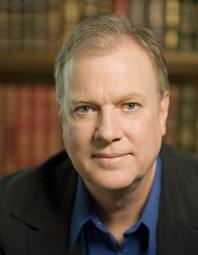
James Scott Bell
Bell argues that the mid-point of every effective narrative contains a mirror-moment – so called because the main protagonist figuratively looks in the mirror, takes stock of his/her life and decides which way to go. This is the perfect compromise between writing a detailed outline and writing the entire book by the seat of your pants. Once you’ve decided on that moment, you can write towards it or away from it, confident that your character arc will be in good shape. The book also contains basic structural advice, and some great examples of mirror moments from classic novels and films.
I’ve already decided on the pivotal mid-point moment for my new book – not the exact scene as such, but what I want my character to understand about herself in that scene. This mid-point is the heart of my story, and will set up both my ending and beginning. A brilliant but very simple concept. Write Your Novel From The Middle is only a short book, less than one hundred pages. But it’s a genuine game-changer. I’m going to search out more of Bell’s books.

October 14, 2014
A Sense Of Place
 Welcome to our monthly blog chat with writing guru Sydney Smith and fellow Penguin author Kathryn Ledson. Today we’re talking about the role of setting in narrative.
Welcome to our monthly blog chat with writing guru Sydney Smith and fellow Penguin author Kathryn Ledson. Today we’re talking about the role of setting in narrative.
KATH
This writing caper is full of surprises and learning curves. Even now, with two books published, I sometimes feel like I’m only just ready to graduate. From Novel Writing kindergarten.
When I wrote Rough Diamond, I planned to keep its Melbourne setting to a minimum. Why would I do this? Well, it’s about my own reading preferences. Firstly, I like a fast-paced plot with plenty of action, not lengthy descriptions. But mostly because my own taste is for exotic locations―places I’ve never seen or would love to see. Parts of the world that exude whatever isn’t Melbourne. Because Melbourne’s humdrum, right? It’s my city, where I grew up in my dull little life. It’s just an extension of boring old me. It’s all so everyday, routine, familiar. How could it be interesting?
Rough Diamond was released, and reviews poured in. Imagine my surprise that many of the positive comments were about the Melbourne setting! The setting I’d so determinedly kept vague (as I thought) with just a few snippets to place the reader: the streets of Richmond, the botanic gardens and tan track, South Melbourne market, Crown casino, Collingwood football club, the local pub. All those very boring, everyday, familiar spots. As it turned out, in my naiveté, I’d unwittingly yet convincingly set my novel in Melbourne.
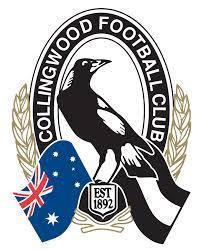 Until I read those reviews, I hadn’t realised―or rather considered―how enjoyable the familiar can be. In reading we relate to characters for various reasons; we share their pains, joys, experiences of all kinds. So, too, I’ve learned, can we relate to a novel’s setting and enjoy the company of familiar turf. Joggers who frequent the tan track, people queuing for those famous South Melbourne market dim sims, our love and hate of Collingwood football club.
Until I read those reviews, I hadn’t realised―or rather considered―how enjoyable the familiar can be. In reading we relate to characters for various reasons; we share their pains, joys, experiences of all kinds. So, too, I’ve learned, can we relate to a novel’s setting and enjoy the company of familiar turf. Joggers who frequent the tan track, people queuing for those famous South Melbourne market dim sims, our love and hate of Collingwood football club.
Funnily enough, I appreciate Melbourne more now. In fact, I’m giving careful attention to place in my current work-in-progress, Grand Slam (working title, my publisher reminds me to add), which is set around the internationally famous Australian Open tennis tournament, hosted by my own beautiful Melbourne. My characters will spend time at the tennis and surrounds as well as thrilling, familiar spots like Southbank and Chadstone Shopping Centre (Chaddy!). And you know what? I’m feeling so excited about it, I might take a quick research trip now…
SYDNEY
I do get what you’re saying, Kath, about the allure of the exotic. But I also get the thrill of reading a novel set in a familiar place. The former is an escape from daily life. The latter makes me feel as if I’m IN the novel I’m reading. I could walk out my door and bump into these characters, pop them on the nose if they irritate me, hug them if I like them.
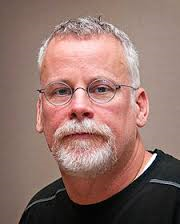
Michael Connelly – Crime Writer
I happen to like a good description. One of the things I love about early Michael Connelly, US crime writer, is the depth of characterisation of LA, where his novels are set. His series hero, Harry Bosch, lives in a house on the side of a hill, with scrub choking the arroyo below, scrub bearing Spanish names―that word “arroyo”, too, which conjures up the dry deserts of California and nearby Nevada. He usually spots a coyote trotting amidst the brush. The coyote is his animal, the battered loner struggling to survive in the increasing urbanisation of its native land.
Harry works in West Hollywood, a place seamed with porno shops, greasy hotels where rooms are rented by the hour, soiled junkies and prostitutes. The big Hollywood sign looms over the city, promising the dream, but it’s a damaged sign, a symbol you trust at great risk to your life and your heart.
That’s what a good description does. It gives the reader the feel of the place in which the story is set, and therefore, the mood of the story itself. The description should convey emotion. If it’s flatly realistic, it’s probably not doing its job.
JENNIFER
I’m with you, Sydney. I love good description. Teachers of writing craft often say that description is boring. Don’t you dare add more than a sentence or two on setting, lest you lose your reader. I think this rule screams out to be broken. A convincing setting helps make any story memorable. But as a writer of Aussie rural fiction, a vivid sense of place is even more vital. Readers of this genre crave a relationship with this country. They’re asking the question :what is it that makes us Australian? And the simple answer is that we come from this place. That’s our identity―the continent itself. And especially that aspect of Australia that is completely different to other places. That doesn’t mean our cities. That means the regions. That means the bush.
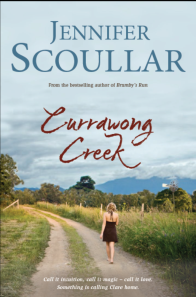 In many novels, and particularly in rural novels, place (literally geographical place) functions like a character in the story. It’s one of the most powerful tools that a writer has. For me, setting stories in wild places allows me to strip away the civilised façade from my characters. In Currawong Creek, for example, my main character is a young professional woman caught up in the career rat race. She has time to examine what she fundamentally wants from life when she goes bush. In my new release Billabong Bend, a young man who’s been a drifter, comes home to the riverlands to confront his past and discover his roots. And by becoming grounded again he finds his future.
In many novels, and particularly in rural novels, place (literally geographical place) functions like a character in the story. It’s one of the most powerful tools that a writer has. For me, setting stories in wild places allows me to strip away the civilised façade from my characters. In Currawong Creek, for example, my main character is a young professional woman caught up in the career rat race. She has time to examine what she fundamentally wants from life when she goes bush. In my new release Billabong Bend, a young man who’s been a drifter, comes home to the riverlands to confront his past and discover his roots. And by becoming grounded again he finds his future.
There must be balance of course. Don’t spend paragraphs describing how things look. Do what Sydney says. Describe how they feel. Use detail. Make it a sensory experience. Here’s an example from my own writing: a man is climbing a tree.
“That precious, familiar calm. Tree climbing. Different to rock-climbing. Trees lived. Even giant Pallawarra still gave with the wind. He moved. Matt moved too, away from the people and the cars and the ravaged earth. He moved into another dimension. For the first time in a long time, Matt focused on the moment. On his breath, his feet, his fingers. A meditation. There was no choice. Any slip was death.
The darkening forest lay in mysterious degrees of light and shade. The more Matt looked at the tree, the more he saw the tree. Its position, its size and form, its unique structure and balance. He saw through its bark-dangled camouflage. He saw its art. A shred of song popped into his head, even though, since Theo, music made him cringe.
‘If you plant ten million trees, none will grow like these.’
Now light rain began falling, deepening the colours. The auburns and browns, the greens and golds, the glistening, mottled curls of stringy-bark streamers. The birds of the upper canopy had long fled, leaving the forest silent. Except for the sound of a strengthening breeze, like the sea-shell psalm of a distant sea.”
And as Kath says, no matter how ordinary the place, assume that some of your readers will be unfamiliar with your setting. The smell of a South Melbourne dim sim that you take for granted, will be a revelation for readers who’ve never visited that market.
SYDNEY
That’s beautiful, Jenny. Place plus emotion plus atmosphere equals setting.
KATH
I take it back. I love lengthy descriptions if written by Jen Scoullar. Mind you, the above piece is also brimming with action and suspense, yes?



